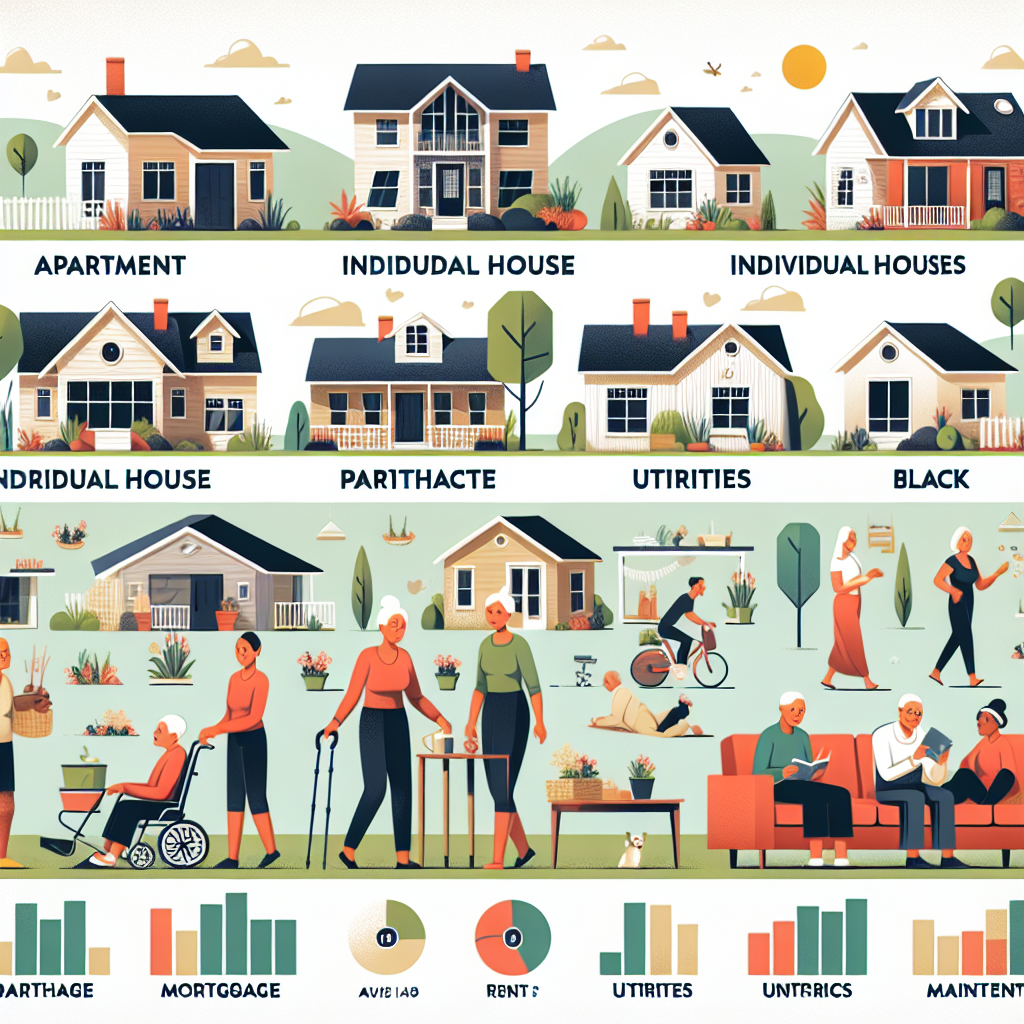Exploring Retirement Living Options and Affordability
Retirement marks a significant transition in life, offering new opportunities and challenges. One of the most crucial aspects of this phase is deciding where and how to live. With a variety of retirement living options available, it’s essential to explore different possibilities and understand their affordability. This comprehensive guide will delve into the primary retirement living arrangements, dissect their unique features, and provide insights into their associated costs.
1. Aging in Place
For many, the idea of aging in place—remaining in one’s own home for as long as possible—is highly appealing. This option allows retirees to retain familiarity, comfort, and established community connections. However, aging in place requires careful planning to address potential health and mobility challenges.
Modifications and Upgrades
To accommodate changing needs, homes may require modifications such as stair lifts, grab bars, walk-in showers, and widened doorways. These upgrades can cost anywhere from a few hundred to several thousand dollars, depending on the scope of work.
In-Home Care Services
Another consideration is the potential need for in-home care services. Assistance with daily activities, medication management, and meal preparation can become necessary. The cost of in-home care varies widely based on the level of service needed, averaging between $20 to $25 per hour for basic care and significantly more for specialized medical care.
2. Independent Living Communities
Independent living communities offer a middle ground between fully autonomous living and more structured environments like assisted living facilities. These communities typically feature private apartments or cottages, along with shared amenities such as dining halls, fitness centers, and social clubs.
Cost Considerations
The cost of living in an independent living community can range from $1,500 to $4,000 per month, depending on location, amenities, and the level of luxury offered. It’s essential to factor in any additional fees for services like housekeeping, meal plans, and transportation.
Social Opportunities
One significant advantage of independent living communities is the robust social network they provide. Organized activities, clubs, and outings foster a sense of community and help retirees remain active and engaged. This social support can be invaluable in promoting mental and emotional well-being.
3. Assisted Living Facilities
Assisted living facilities are designed for individuals who need help with daily activities but do not require the intensive medical care provided by nursing homes. These facilities offer private or semi-private apartments, along with services like housekeeping, meals, transportation, and personal care.
Levels of Care
The level of care provided in assisted living facilities can vary, with some offering extensive medical services and others focusing primarily on personal care. It’s crucial to assess your needs accurately and choose a facility that can accommodate them.
Financial Aspects
Assisted living costs range from $3,000 to $6,000 per month, with variations based on location, apartment size, and the level of care required. It’s important to evaluate what is included in the monthly fee and what services might incur additional charges.
4. Continuing Care Retirement Communities (CCRCs)
Continuing Care Retirement Communities, or CCRCs, offer a comprehensive continuum of care. They typically include independent living units, assisted living facilities, and skilled nursing care within the same community. This arrangement allows residents to transition smoothly between different levels of care as their needs evolve.
Contract Options and Costs
CCRCs operate on various contract models, including entry fee contracts, fee-for-service contracts, and rental contracts. Entry fees can range from $100,000 to $500,000, with monthly fees typically between $2,000 and $4,000. The total cost will depend on the specific contract and the services chosen.
Comprehensive Care
One of the primary advantages of CCRCs is the seamless access to various care levels without having to relocate. This continuity can provide peace of mind for both residents and their families, knowing that needs will be met as health conditions change.
5. Nursing Homes
Nursing homes, also known as skilled nursing facilities, are designed for individuals requiring 24-hour medical supervision and care. These facilities offer extensive medical resources, rehabilitation services, and support for those with severe health conditions or disabilities.
Cost and Insurance
Nursing home care can be expensive, with costs ranging from $6,000 to $10,000 per month, depending on the level of care and the facility’s location. Many residents utilize long-term care insurance, Medicare, or Medicaid to help cover these expenses.
Specialized Care
Nursing homes offer specialized care for conditions such as Alzheimer’s disease, dementia, and complex medical needs. They provide a high level of medical supervision, ensuring that residents receive appropriate treatments and interventions.
6. Cohousing and Shared Living
Cohousing and shared living arrangements are gaining popularity among retirees seeking community and affordability. These options typically involve communal living spaces and shared responsibilities, fostering close-knit relationships and reducing individual living costs.
Financial Benefits
By pooling resources and sharing expenses, cohousing and shared living arrangements can be more affordable than traditional living options. Monthly costs can vary widely but are generally lower than those of independent or assisted living facilities.
Community Engagement
Cohousing promotes active community involvement, with residents often participating in group activities, meals, and decision-making processes. This collaborative environment can enhance social connections and create a supportive network for all members.
Conclusion
Choosing the right retirement living option involves careful consideration of personal preferences, health needs, social desires, and financial capabilities. Each option offers unique benefits and challenges, making it essential to assess your situation comprehensively.
Start by evaluating your current and future needs, including potential medical requirements and desired lifestyle. Consider consulting with financial advisors, healthcare professionals, and family members to develop a well-rounded understanding of your options. By thoroughly exploring the available retirement living arrangements and their associated costs, you can make an informed decision that supports a fulfilling and comfortable retirement.




